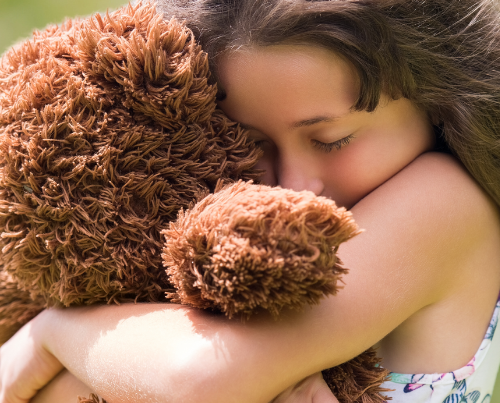Early in the Coronavirus pandemic, United Nations Secretary-General António Guterres issued a plea on Twitter:
“Peace is not just the absence of war. Many women under lockdown for #COVID19 face violence where they should be safest: in their own homes. Today I appeal for peace in homes around the world. I urge all governments to put women’s safety first as they respond to the pandemic.” [1]
A week later, Andrew M. Campbell of Campbell Research & Consulting in Indianapolis, published a paper underscoring the urgency of the plea. An increasing risk of family violence during the Covid-19 pandemic: Strengthening community collaborations to save lives [2] warned that households already tense and dangerous from domestic abuse can turn into powder kegs under the additional strain of isolation and all that goes with it.
Why? Because a crisis like this puts even more strain on a household and more power into an abuser’s hands to isolate those they abuse.
COVID-19 as a weapon
Social distancing and fear of the virus give abusers the perfect excuse for keeping victims away from other people, Campbell writes, thus depriving those abused from much-needed respites and from opportunities for seeking help. Keeping someone at home also makes monitoring their phone and social media use even easier than usual.
Even the crisis itself becomes a new weapon in the abuser’s arsenal. The National Domestic Violence Hotline reports evidence of this behavior; according to its website, “A chatter mentioned that the abuser was using the virus as a scare tactic to keep the survivor away from their kids” and “A health professional still living with their abuser called and said they were physically abused that night because their abuser was sure they were trying to infect them with COVID-19.” [3]
Meanwhile, stress intensifies with decreased income lost due to the pandemic and increased substance abuse by violent individuals. “Alcohol abuse, a commonly reported risk factor for family violence, has been linked to an accumulation of stressful events and a lack of social support [such as is occurring now] … Family-violence perpetrators who abuse alcohol may be even more likely to do so in the home, increasing risk for the entire household,” Campbell wrote.
The same is true for perpetrators who have access to guns. “Reports of increasing gun and ammunition sales in the U.S. during the crisis are particularly concerning, given the clear link between firearm access and fatal domestic violence incidents,” he added.
Could communities have been more prepared?
Campbell believes the U.S. could have been more prepared by studying what happens to victims of domestic violence during natural disasters:
“Domestic violence reports increased by 46% in Othello, Wash., after the eruption of Mount St. Helens … After Hurricane Katrina, reports of psychological abuse among women by their partner increased 35%, while reports of partner physical abuse nearly doubled in the southernmost Mississippi counties. Similar significant increases in domestic violence have been reported following earthquakes, tsunamis, hurricanes and many other catastrophic events around the world.”
In a 2019 study [4] on how Hurricane Harvey affected families that had already experienced domestic violence, the Texas Council of Family Violence found higher rates of domestic violence during and after the crisis. Other studies show that these increases can last for up to a year following a disaster.
Campbell’s advice: “Communities must ensure citizens are aware of the current increased risk of family violence at this time, encourage them to check on their neighbors, friends and family (while maintaining adherence to any distancing regulations) and report ANY concerns they see or hear to the proper authorities.”
You can prevent domestic violence
When we equip people to recognize the signs of domestic abuse, we start to save lives. Sheltering Wings will speak to any group about these topics:
- Understanding Domestic Violence – an overview of domestic violence, the types and signs of abuse, barriers to leaving, resources available, characteristics of safe, healthy relationships and more.
- Teen Dating Violence – a customized interactive program encouraging teens to pursue and maintain healthy relationships, identify types and signs of potential abuse, and steps to take to exit relationships safely.
- Domestic Violence & the Workplace – in-service presentations about domestic abuse, signs of unsafe relationships, steps to take when suspecting abuse, the impact of employees facing domestic violence at home, and sound advice on helping employees and protecting employers.
- Domestic Violence in the Church – knowledge and advice designed for the unique needs of faith leaders.
- Asset Builder Training – helping a community make environmental, social and systemic changes to reduce risk factors and preventing first-time occurrences of violence.
For more information, complete this form or contact Prevention and Education Officer Melissa Echerd by email or at (317) 386-5061.
—
[1] See Tweet here.
[2] Campbell AM. An increasing risk of family violence during the Covid-19 pandemic: Strengthening community collaborations to save lives. Forensic Science International: Reports, vol. 2, 2020. Published online April 12, 2020. Accessed here.
[3] National Domestic Violence Hotline website.
[4] Serrata, Josephine V. and Alvarado, M. Gabriela Hurtado, Understanding the Impact of Hurricane Harvey on Family Violence Survivors in Texas and Those Who Serve Them, Texas Council on Family Violence, here.







